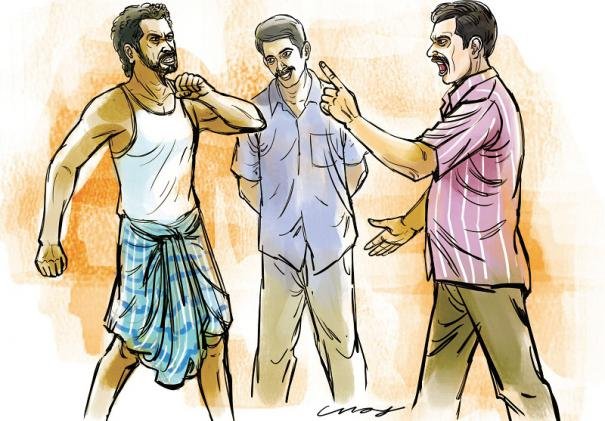Weak Mahinda Vs Kshama Factor And The ‘Common Candidate’ Debate
Challenging times pose challenging questions. For the left this is especially the case as we task ourselves to play a leading role in the fight for a better life for all. In Sri Lanka where the government of Mahinda Rajapaksa is crushing democratic rights and stands accused of genocidal slaughter this is especially so. Every twist and turn of strategy and tactics must involve a serious weighing up of ideas and historical lessons if it can play any useful role.
The attack on Muslims in Sri Lanka has provoked huge anger. Given there is evidence of government involvement, it has the potential to enormously weaken the regime of President Mahinda Rajapaksa (MR). So the prospect that MR will get neither the votes of Tamils or Muslims nor of progressive Sinhalese is a factor in the discussion about bringing forward a ‘common candidate’ of the opposition to defeat him.
Debating the strategy to bring down MR is likely to dominate Sri Lankan politics until the presidential election. Although the idea of putting forward a ‘common candidate’ originated from the left, unbelievably the arguments that are linked to it have ruled out a potential left challenge. This debate must be re-opened. So-called left intellectuals, who claim to be ‘down to earth’ and ‘practical’, propose that the devil is to be challenged with a demon.
A number of questions will be posed if a possible left challenge is suggested. From previous betrayals to the current examples of sectarianism, the crimes of the left will be listed. But the key question is this: should we seek regime change or a change that will provide a meaningful transformation of life for the masses in Sri Lanka? Bringing down Mr Devil at all costs is one thing – but what replaces him is a vital question. Tamils, workers, Muslims have all suffered miserably at the hands of the neoliberal UNP.
It goes without saying that when we speak of the ‘left’ we leave aside insignificant groups such as the sectarian ‘keyboard Marxists’. But it must be acknowledged and understood that the left in general has been a key factor in shaping history in Sri Lanka. The left must be credited with a number of significant gains. Sri Lanka still enjoys free education, health service, etc, which are advanced achievements in comparison to other countries in the region. (Read History of Resistance for details , available here ).
Although the left today is weaker as it faces constant attacks by the government and the leadership has largely accrued a record of betrayal, it is still capable of producing killer punches. More importantly, a left opposition will be the only ‘trustworthy’ opponent of MR.
It is only a left representative who represents the interests of the working class that can be trusted to deliver on the programme that they stand on – whether it is the abolition of the executive presidency, an investigation of war crimes, devolution of power, a commitment to investing in education and health, reducing the defence budget, removing the military from public places and curtailing its powers, or ensuring media freedom, freedom of speech, and other democratic rights. What is the point of rallying behind a candidate who promises some or any of these if they cannot be trusted to deliver the programme that we want? Or if they have a record of defending the interests of the exploiters?
We must remind ourselves of the presidential election in 2005 – the moment MR captured power. It was a narrow victory. He would not have won if it was not for two key factors. One factor was the JVP which mobilised the support of the unions and all its strength behind MR while hiding their nationalism under Marxist rhetoric. The other factor was the boycott enforced in Tamil areas by the LTTE. This took at least 400,000 votes out of the equation. Mahinda won with a majority of just over 180,000 votes.
But another interesting fact must be noted here. In third place, with over 35,000 votes, was left candidate Siritunga Jayasuriya of the United Socialist Party. During the election he appealed to the LTTE not to boycott – even sounding a warning that doing so would be akin to digging their own graves. Following MR’s acceptance speech there was an opportunity for the opposition to speak. UNP leader Ranil abstained. But Siritunga took the opportunity to issue a further warning to MR: “Do not unleash the monster of Sinhala chauvinism.”
Siri was alone in issuing this caution – the so-called left intellectuals were unable to assess what was coming their way, as they are today. Those forces that kept their silence in 2005 are now rolling in behind a simple recipe: ‘Split the Sinhala nationalist vote by standing a Buddhist monk as a candidate – and unite Tamil and left/progressive votes with it.’ This is the astonishing formula that is being proposed to defeat MR.
Of course much has changed since 2005 – but those events must not be forgotten and the fundamental question must be asked: Isn’t there a case for building and mobilising for a left challenge to Mahinda?
For those ‘practical types’ who cry out and say it’s just a dream, let us cite the example of how the ‘dream’ of Martin Luther King came true recently in Seattle. All those on the left must have heard the name of Kshama Sawant by now. Her election and subsequent campaigning achievements provide an answer to all the scaredy-cat lefts who fear their own shadow and attempt to hide their politics.
Kshama, a new shining star of the socialist world, is originally from South Asia. When Kshama won a Seattle city council seat last year with almost 100,000 votes even MSNBC was forced to report that the socialist ‘is no longer a dirty word’
Leading publications across the western world carried the news of her victory which is still shocking the core of corporate establishment. And they are correct to fear this movement which elected her and the role she will play.
Kshama, by mobilising the masses, has started to achieve Martin Luther King’s dream. King was shot dead while supporting striking workers for better wages and union recognition. One of the core demands of the civil rights movement, the march to Washington and part of King’s famous ‘I have a dream’ speech was the demand for decent minimum wage. Fifty years later Indian-born Kshama was able to make that dream into reality with her $15 an hour minimum wage campaign in Seattle.
And the spring that started in Seattle is now storming throughout the US spreading fast to San Francisco, Chicago, New York, and beyond. The demand for a $15 minimum wage is entering the national psyche of American workers. Even Obama has been forced to lend his lips to it. Kshama simply stated the obvious but the powerful axiom – anybody who is working should not live in poverty.
And the prairie fire that Kshama started is not contained within the US itself. “It’s an important mile stone. Take note” says Will Hutton in his column in the UK Observer. From the Times of India to Pakistan’s defence website, reports across the world link her name with the fight for a minimum wage that is no longer a starvation wage. Of course there are specific conditions in the US and in Seattle that are not universal – but the need and potential for such a struggle is far from unique.
How was this possible? How did she do it? She had none of the preconditions that the so-called left ‘intellects’ demand before they bend down to support a left candidate. Her long march began with her first step into the 2011 Occupy movement arguing the case for a left opposition – an independent voice for the working masses. But she had a party behind her – Socialist Alternative in the US. With that asset she was able to get through the barrage of attacks and manoeuvres of corporate businesses and political establishment.
Yes. She was a member of a party – a socialist party. She still argues for socialism. Despite the beliefs of certain left cowards, this is not an obstacle but a huge strength in the building of a mass left opposition. Various trade unions, campaigns and progressive sections of society are rallying behind her to win $15 an hour minimum wage. Why? She has shown what an elected representative who stands for the 99% of workers and poor and ordinary people can do when they are determined.



















